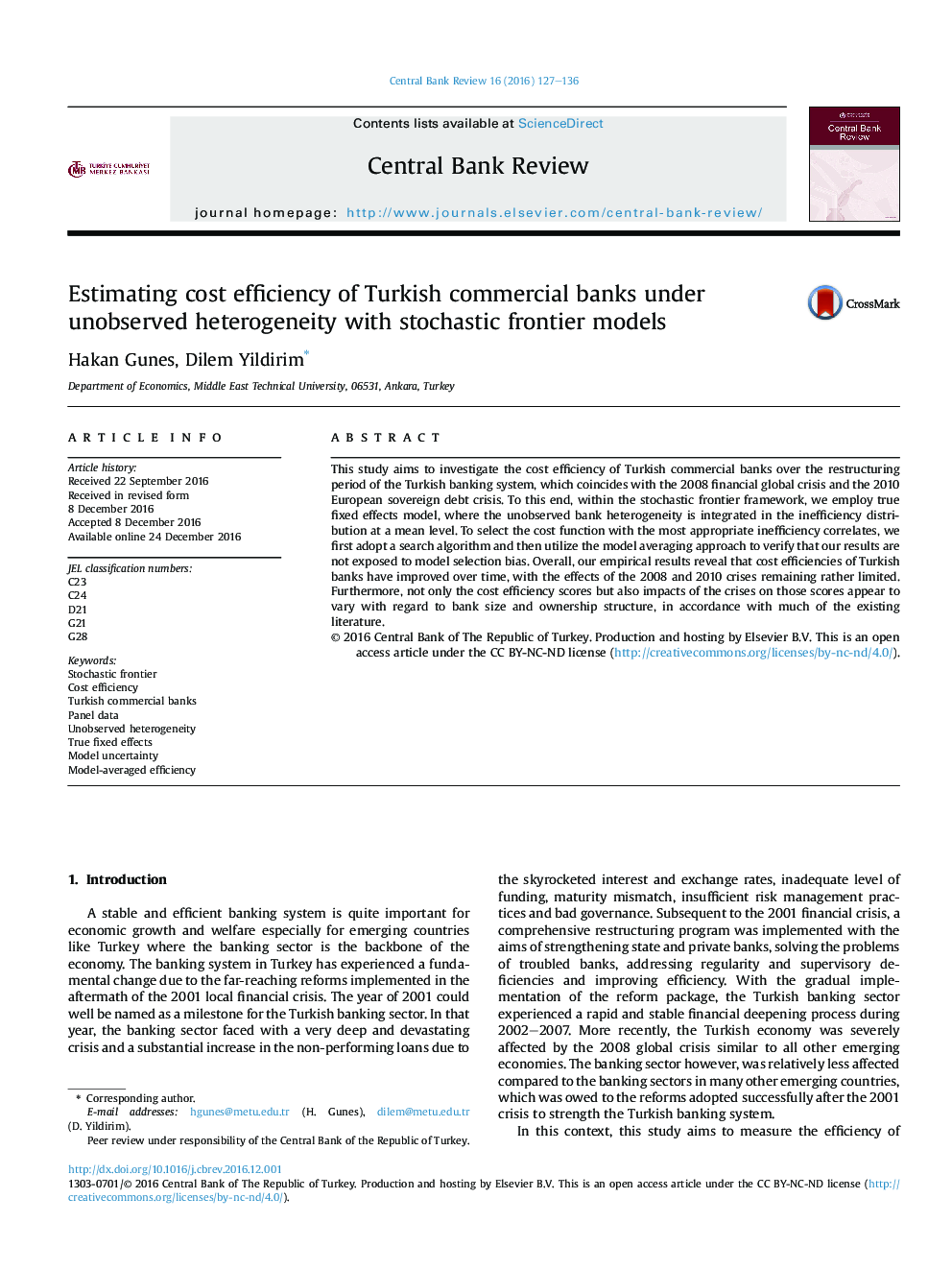| Article ID | Journal | Published Year | Pages | File Type |
|---|---|---|---|---|
| 7396170 | Central Bank Review | 2016 | 10 Pages |
Abstract
This study aims to investigate the cost efficiency of Turkish commercial banks over the restructuring period of the Turkish banking system, which coincides with the 2008 financial global crisis and the 2010 European sovereign debt crisis. To this end, within the stochastic frontier framework, we employ true fixed effects model, where the unobserved bank heterogeneity is integrated in the inefficiency distribution at a mean level. To select the cost function with the most appropriate inefficiency correlates, we first adopt a search algorithm and then utilize the model averaging approach to verify that our results are not exposed to model selection bias. Overall, our empirical results reveal that cost efficiencies of Turkish banks have improved over time, with the effects of the 2008 and 2010 crises remaining rather limited. Furthermore, not only the cost efficiency scores but also impacts of the crises on those scores appear to vary with regard to bank size and ownership structure, in accordance with much of the existing literature.
Keywords
Related Topics
Social Sciences and Humanities
Economics, Econometrics and Finance
Economics, Econometrics and Finance (General)
Authors
Hakan Gunes, Dilem Yildirim,
